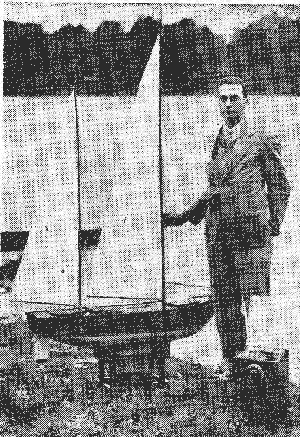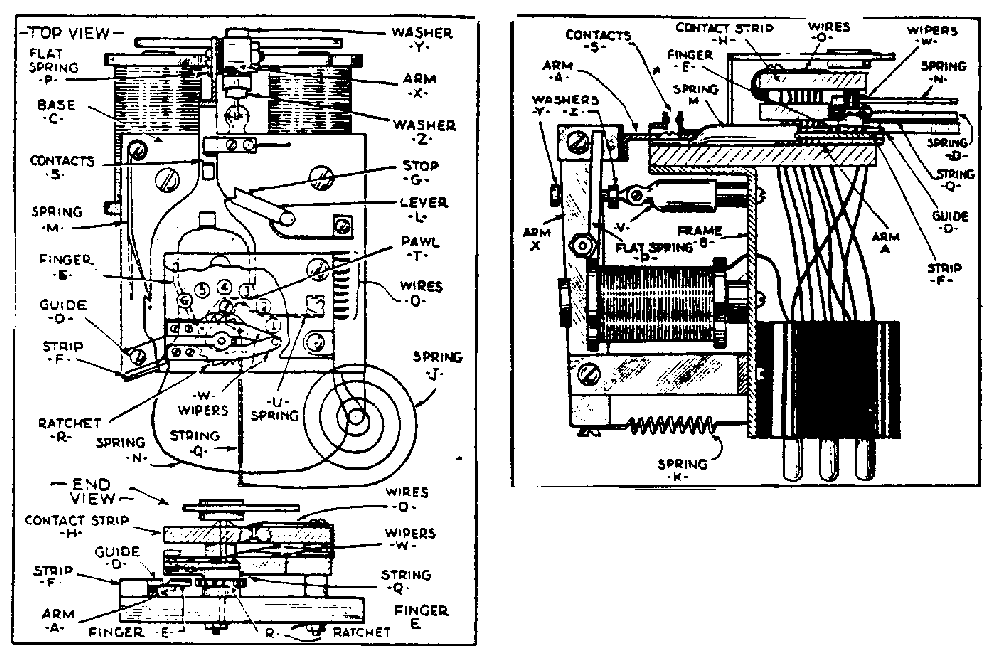The First Radio-Controlled Model Sailing Yacht

Fig. 1. Robert Henry Packard and the first remote controlled model yacht. (Boston Traveler, September 10, 1934)
On the 10th of September 1934, the Boston Traveler printed this picture (Fig. 1) under the headline “Radio Controlled Boat Operated by Pressing Button in Box Ashore” The story began:
It was no less than sheer wizardry.
The tall youngster—22, with rimless spectacles, brown eyes behind them, a slender figure, pressed a button upon a little box ashore and the boat—a triangular sail schooner rig model boat afloat upon the water—changed her course, tacked in an orderly and technical manner, and swung off on the starboard leg of her course.
There was of course no one aboard this craft—a model six feet overall—and everything worked ‘by magic.’
A somewhat less breathless description had appeared the previous May, when Robert Henry Packard, a PhD candidate at Harvard, presented a student paper at the North Eastern District Meeting of the American Institute of Electrical Engineers. In his paper, Packard described how he set out to solve the problems inherent in controlling a model yacht with the radio gear of the day. The principal problem, of course, was that he was limited to pulse or “bang bang” control, and somehow had to convert that to smooth analog motion of sails and rudder, and do so within the confines of what was, by today’s standards, some pretty bulky equipment.
The general layout of the equipment is shown in Fig 2. A single motor acted as both rudder servo and sail winch, with a gearshift used to select the desired function. The pulse commands were used to shift the gear to sail or rudder control, select the direction of motion, and start and stop the motor. A friction clutch was used so that if the servo motor turned either the sail drum or the rudder to the end of its travel it would not jam the mechanism.
Pulses were transmitted automatically by a clockwork pulser on the transmitter that operated off of one of five buttons: push button one, get one pulse; push button two get two pulses, etc. Lights on the tops of the mast blinked as pulses were received, so the operator knew what was happening inside the control system.
The elecronics were pretty straightforward. A one-tube Hartley oscillator transmitted at 78 meters. The standing rigging of the yacht was used as an antenna, and the receiver was a three-tube regenerative set with a sensitive relay instead of earphones.
The heart of the system was what Packard called the “selector.” It was a spring-wound ratchet escapement with six possible positions; only four were used in actual operation.
Pulses sent with less than one second intervals advanced the escapement; two pulses separated by more than one second caused it to rotate to the “home” position and stop whatever servo motion was in effect. Thus [pulse] [short] [pulse] [short] [pulse] would move the selector to position three, shift the gear to the sail winch, and start turning the drum. The drum would rotate until either it hit the stop, in which case the friction clutch would disengage and the motor would rotate freely, or until [pulse] [long] [pulse] was received, in which case the selector would return to “home”, and the motor would stop.


